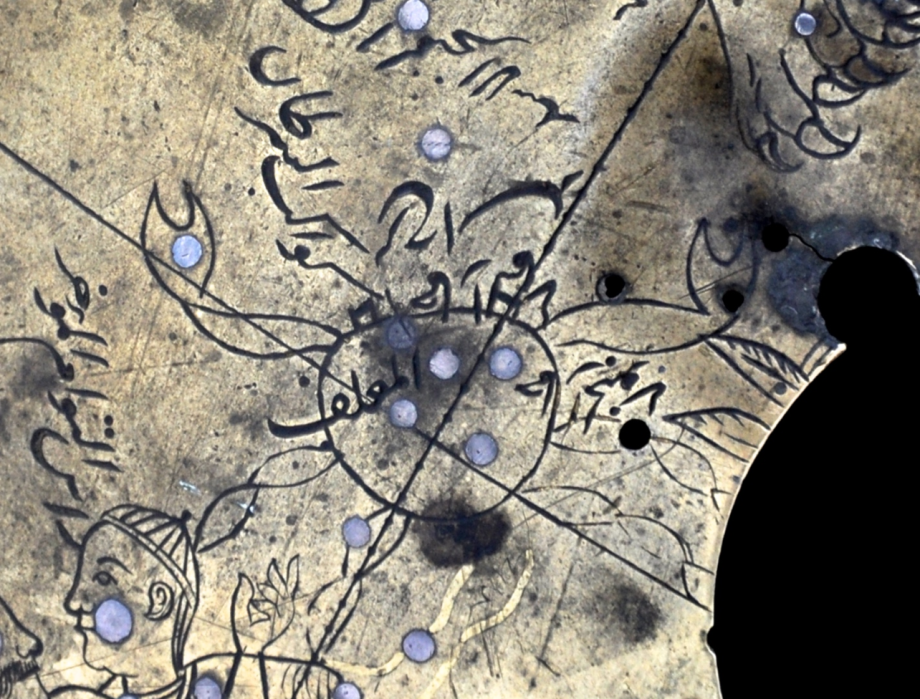
According to Emilie Savage-Smith, in the Hellenistic world this constellation, the most inconspicuous of all zodiacal signs, was usually called καρκἱνος (a crab), latinized as Cancer. Aratus calls it not only καρκἱνος, but the manger or crib (φἀτνη) between two asses. This image of the crib and asses was common in later poetry. Theocritus says “the clouds disperse this way and that, the bears are seen again, and between the asses the dim crib, betokening that all is fair for voyaging”. Mythographers said that Dionysus placed the two asses in the heavens for they had helped him flee across a swamp to a temple in order to restore his sanity. Another story says that the two asses brayed so loudly when Zeus was fighting the Giants, that the Giants took flight and were defeated. The crab was explained as being one which had snapped at the foot of Heracles (Hercules) from the swamp when he fought the Lernacan Hydra. Ptolemy named the constellation Cancer and noted that its first star was nebulous and called the crib latinized as Praesepe.
On the Manuchihr globe the constellation is labeled kawākib al-saraṭān (the constellation of the crab), and consists of nine formed stars and four unformed ones, the latter being the two above the head and the two near the southern claw. The three stars in a row across the breast of the crab bear names derived from Greek concepts of the constellation. The middle star of these three is the open cluster and is labeled al-ma‘laf (a manger, or stable [M44, Praesepe]), as termed by al-Ṣūfī. The two stars on either side of the Manger [γδ Cancri], were called by Aratus and Ptolemy “asses”. Al-Ṣūfī also termed the two stars al-himārayn (the two asses). Thus on the globe they are labeled al-ḥimār al-shimālī (the northern ass) and al-ḥimār al-janūbī (the northern ass) respectively.